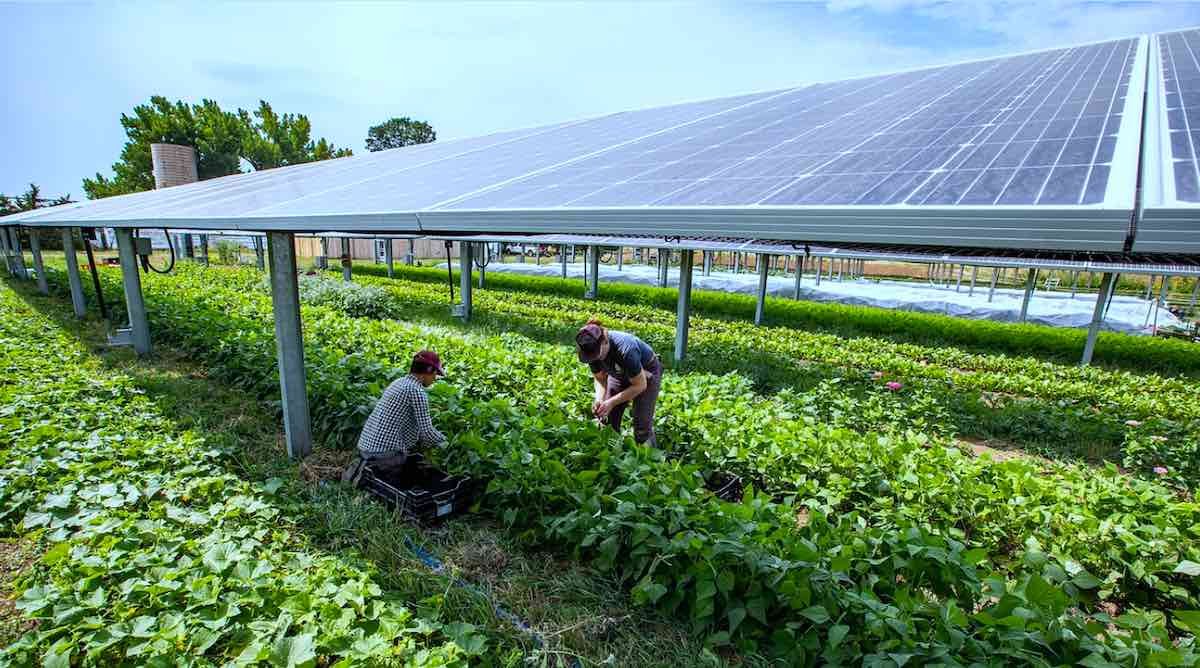
Contents
Introduction
The intersection of solar energy and urban farming has gained significant attention in recent years. As cities become more crowded and the need for sustainable food production increases, the integration of solar energy systems in urban farming infrastructure has emerged as a viable solution. This article explores the concept of the intersection of solar energy and urban farming, highlighting its relevance and importance in addressing the challenges of urbanization and food security. By delving into the benefits, policy considerations, case studies, and future outlook of this intersection, we can understand its potential impact on the environment, economy, and society.
Historical Background
To comprehend the intersection of solar energy and urban farming, it is essential to understand the historical development of each field independently. Solar energy has a long history dating back to ancient civilizations, with notable advancements in the 20th century leading to the development of photovoltaic and solar thermal technologies. Urban farming, on the other hand, has its roots in ancient agricultural practices but has gained traction in response to urbanization and the need for localized food production. The convergence of these two fields can be attributed to advancements in renewable energy technology, increased awareness of sustainable practices, and the growing interest in urban agriculture.
Key Concepts and Definitions
Solar energy, in its various forms such as photovoltaic and solar thermal, harnesses the power of the sun to generate electricity or heat. Urban farming encompasses different approaches like rooftop gardens and vertical farms, which utilize limited urban spaces for agricultural purposes. Furthermore, the concept of renewable energy is crucial in urban farming as it promotes sustainable practices by reducing reliance on fossil fuels and minimizing environmental impact.
Main Discussion Points
Benefits of solar energy in urban farming
Reduced energy costs and carbon footprint: Integrating solar energy systems in urban farming can significantly reduce energy costs and carbon emissions associated with traditional energy sources.
Increased self-sufficiency and energy independence for urban farms: By utilizing solar energy, urban farms can become more self-sufficient and less reliant on external energy sources.
Opportunities for off-grid farming in remote or underdeveloped areas: Solar-powered urban farms can provide sustainable food production solutions in areas with limited access to electricity or underdeveloped infrastructure.
Integration of solar energy systems in urban farming infrastructure
Design considerations for solar panels on rooftops and vertical farms: Incorporating solar panels into the design of rooftops and vertical farms requires careful planning to optimize energy generation and agricultural productivity.
Innovative technologies for combining solar energy and hydroponics/aquaponics systems: Advancements in technology have allowed for the integration of solar energy systems with hydroponics and aquaponics, creating efficient and sustainable farming methods.
Case studies of successful solar-powered urban farms: Several examples of solar-powered urban farms showcase the successful integration of renewable energy and sustainable agriculture, providing valuable insights for future projects.
Policy and economic considerations for the intersection of solar energy and urban farming
Government incentives and regulations promoting renewable energy and urban agriculture: Many governments provide incentives and regulations to encourage the adoption of renewable energy and urban farming practices.
Economic feasibility and cost-benefit analysis of solar-powered urban farms: Assessing the economic viability of solar-powered urban farms is crucial for their widespread implementation.
Potential for job creation and economic development in the renewable energy and urban agriculture sectors: The intersection of solar energy and urban farming has the potential to create employment opportunities and foster economic growth in both sectors.
Case Studies or Examples
Highlighting successful projects that have integrated solar energy and urban farming provides valuable insights into the outcomes, challenges, and lessons learned. These case studies serve as inspiration and guidance for future endeavors in the field.
Current Trends or Developments
Exploring recent research findings and advancements in the intersection of solar energy and urban farming sheds light on emerging technologies and innovative approaches being used. Staying up-to-date with current trends helps in harnessing the full potential of this intersection.
Challenges or Controversies
Implementing solar energy systems in urban farming comes with its challenges and limitations. Addressing these challenges, such as limited space and high upfront costs, is crucial for the widespread adoption of solar-powered urban farms. Additionally, controversies and differing viewpoints surrounding this topic should be acknowledged and discussed to foster a comprehensive understanding.
Future Outlook
Speculating on the future implications and potential growth of the intersection of solar energy and urban farming allows us to envision a more sustainable and self-sufficient urban environment. Potential advancements and areas of further research can provide a roadmap for future innovations in this field.
Conclusion
In conclusion, the intersection of solar energy and urban farming holds immense potential in addressing the challenges of urbanization and food security. By leveraging the benefits, considering policy and economic factors, and learning from case studies, we can pave the way for a sustainable future. The integration of solar energy systems in urban farming infrastructure is a promising avenue that can lead to environmental, economic, and social benefits.